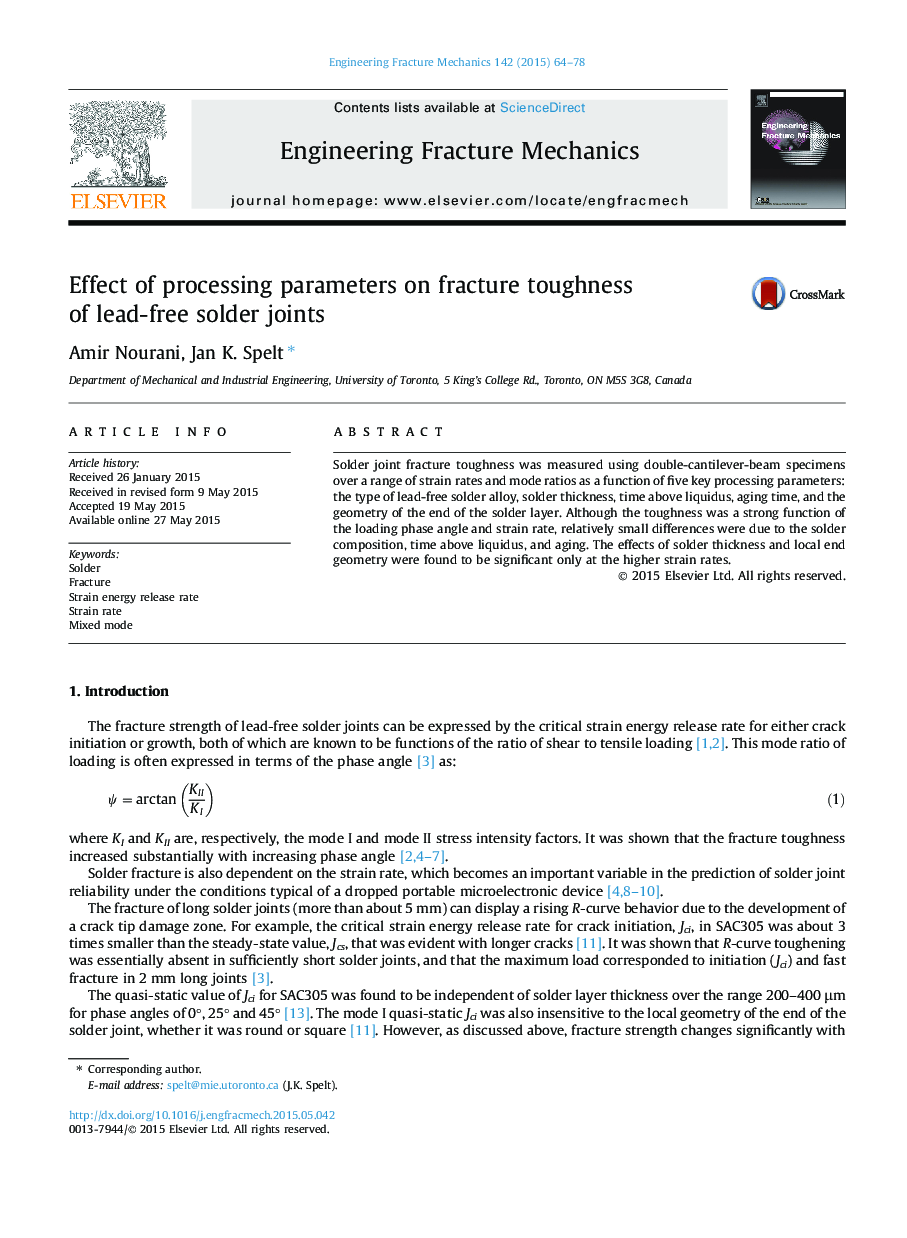| Article ID | Journal | Published Year | Pages | File Type |
|---|---|---|---|---|
| 770525 | Engineering Fracture Mechanics | 2015 | 15 Pages |
•Solder joints tested at different phase angles and strain rates.•The effect of solder geometry became important only at high strain rates.•Aging reduced fracture toughness of SAC305 at high strain rates.•Fracture toughness of SAC305 was independent of time above liquidus.•Fracture toughness was effectively the same for SAC0807, SAC0307 and SAC305.
Solder joint fracture toughness was measured using double-cantilever-beam specimens over a range of strain rates and mode ratios as a function of five key processing parameters: the type of lead-free solder alloy, solder thickness, time above liquidus, aging time, and the geometry of the end of the solder layer. Although the toughness was a strong function of the loading phase angle and strain rate, relatively small differences were due to the solder composition, time above liquidus, and aging. The effects of solder thickness and local end geometry were found to be significant only at the higher strain rates.
